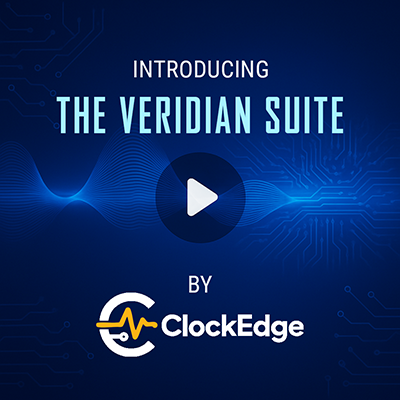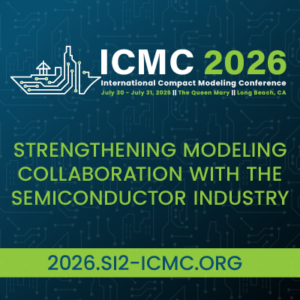
Russell (Russ) Garcia is a veteran technology executive with over 30 years of leadership experience in semiconductors, telecommunications, and advanced electronics. As CEO of Menlo Microsystems, he has led the commercialization of disruptive MEMS switch technology across RF, digital, and power systems.
Previously, Russ founded the advisory firm nGeniSys, served as an Executive in Residence at GE Ventures, and held senior leadership roles at Microsemi, Texas Instruments, and Silicon Systems. He also served as CEO of WiSpry and u-Nav Microelectronics, where he oversaw the launch of the industry’s first single-chip GPS device. Russ remains active as a board member and industry advisor.
Tell us about your company
Menlo Micro is setting a new standard in chip-based switch technology with its Ideal Switch by addressing the limitations of traditional electromechanical relays (EMRs) and solid-state (SS) switches.
Following the path of other disruptive innovators, our RF products are enabling customers in high-growth markets, particularly AI, aerospace, and defense to miniaturize their systems while enhancing performance, capability, and reliability. Driven by AI-fueled growth in data and the xPUs supporting the expansion, we’re responding to customer demand by delivering best-in-class miniature RF switch products – necessary for testing existing and future generations of high-speed digital data buses – and scaling to support increased adoption among the top semiconductor manufacturers. We’re also expanding our high speed and high-performance RF switch products into the aerospace and defense sectors with engagements with top defense, radar, and radio OEMs. With product adoption accelerating in the RF segment, the company is developing and positioning a new smart power control product platform to expand in AC/DC power distribution and control to meet a growing demand in microgrids, data centers, and factory automation.
Our technology overcomes system-level bottlenecks caused by traditional switching, enabling customers to push performance boundaries such as accelerating AI GPU testing, delivering step-function improvements in size, weight, power, and performance for satellite communications beamforming, enhancing filtering in mobile radios, reducing energy consumption in factory automation, and improving fault detection and power distribution in energy infrastructure.
What problems are you solving?
Across industries, engineers face critical limits with traditional switching technologies. EMRs are large, slow, and prone to mechanical wear. SS switches suffer from high on-resistance, leakage, and heat generation, which limits scalability, reliability, and efficiency.
In semiconductor testing, switch performance directly affects test speed, accuracy, and cost. Traditional switches degrade signals and limit bandwidth, increasing complexity and slowing time-to-market. Aerospace and defense systems demand rugged, reliable switches that meet tight size, weight, and power constraints, yet traditional options lack durability or require bulky protection. Power systems, from industrial automation to energy grids, face thermal inefficiencies that drive overdesign, and slow switching speed limits responsiveness to system faults.
Menlo’s technology is unique because as it is a true metallic conductor rather than a semiconductor, it delivers near-zero on-resistance, ultra-low power loss, and minimal heat generation. This eliminates the need for heat sinks and complex cooling, significantly improving thermal and power efficiency.
Built on a MEMS process, it achieves chip-scale integration, enabling up to 10x or more reductions in footprint and higher channel density for compact, scalable designs. It maintains reliable operation across extreme environments, from cryogenic to +150°C, and withstands shock and vibration, making it ideal for mission-critical applications.
With billions of cycles and no mechanical degradation, its long life combined with low power consumption and minimal thermal management reduces total cost of ownership through fewer replacements, simpler designs, and lower maintenance.
By solving the longstanding trade-offs between speed, power, size, and reliability, Menlo enables engineers to build smaller, faster, more energy-efficient, and reliable RF and power control systems.
What application areas are your strongest?
Our platform is strongest in high-performance industries, thanks to its broadband linearity, from DC to mmWave, and ultra-low contact resistance.
While our platform supports a wide range of demanding applications, from RF to power switching, one of Menlo’s fastest-growing areas is high-speed digital test. We’ve built a unique position by enabling high-integrity test solutions for advanced interfaces like PCIe Gen6 at up to 64 Gbps. Our switches offer a rare combination of broadband linearity from DC to mmWave, a compact footprint, and low on-resistance, ideal for both DC and high-speed environments. This dual capability allows customers to consolidate hardware, reduce signal distortion, and improve test density, improving ROI and lowering total cost of ownership. With proven reliability across billions of cycles, our solutions also minimize maintenance and system downtime – driving our growing market share in semiconductor test, especially among companies working on the next wave of AI processors, GPUs, and data center chipsets.
Looking ahead, Menlo is actively developing its next generation of switches to support PCIe Gen7 and Gen8, and scaling data rates of 128 and 256 Gbps. This roadmap is driven in close collaboration with our customers to align with their next-gen test infrastructure needs.
Beyond test, our innovations in high-speed switching are creating leverageable product platforms for adjacent markets. In aerospace and defense, for example, we’re applying this same high frequency control switching capability to ruggedized environments, where high performance, fast actuation, and extreme reliability are critical, such as phased array radar, electronic warfare, and advanced power protection systems.
How do customers normally engage with your company?
Collaboration is core to our approach. Because our technology supports everything from testing to deployment and optimization, we engage early and often, working not just to meet needs, but to anticipate them. Our team strives to “see around corners,” aligning our innovations with where the industry is headed. To do this we create strong working partnerships with our customers – when our customers succeed through Menlo product integration, we succeed.
A strong example of this model is the development of the MM5620 switch. In 2023, we partnered with leading GPU and AI chip manufacturers to understand the growing challenges in semiconductor testing. As demands on AI chips, xPUs, and custom ASICs surged, legacy switching became a clear bottleneck, resulting in longer test cycles, increased complexity, and delayed time-to-market.
These insights led to the MM5620: a high-speed, high-linearity switch [array] delivering near-zero insertion loss, ultra-low contact resistance, and exceptional linearity from DC to mmWave. This allows next-gen device testing without compromising signal integrity or accuracy. This is a step-change in test efficiency, with customers reporting 2x faster test times, simplified hardware, lower overhead, and reduced consumables, key reasons top semiconductor companies choose to collaborate with us. Building on this success, we continue to partner with AI and high-performance computing leaders to help them stay ahead in a fast-moving, competitive market.
What keeps your customers up at night?
Our customers operate in industries like semiconductor supply chain, aerospace & defense, communications infrastructure and energy infrastructure where any failure or signal degradation can lead to significant financial impact, operational downtime, and safety risks. The increasing complexity and miniaturization of modern electrical systems amplify the vulnerabilities inherent in legacy switching technologies.
As system architectures demand higher bandwidth, faster switching speeds, and tighter thermal budgets, the tolerance for insertion loss, contact resistance, and thermal dissipation issues are rapidly diminishing. Consequently, customers are under significant pressure to mitigate these risks without compromising performance and reliability, while reducing total cost of ownership. This dynamic is driving customers to collaborate with us on current product offering adoption as well as their next-generation electronic systems.
What does the competitive landscape look like and how do you differentiate?
The promise of a true MEMS switch, i.e., a tiny, fast, efficient mechanical conductor, rather than a semiconductor, has long been recognized. However, scalability has been the major barrier. Over 30 companies have attempted to commercialize MEMS switches only to fail due to material and manufacturing challenges. Semiconductor fabs rely on materials like Silicon (a partial conductor) or soft metals, which cannot deliver the durability and reliability required for high-cycle mechanical elements.
Backed by R&D at GE, we developed a proprietary metal alloy system engineered to be highly conductive and mechanically robust for the device actuator and further integrated the alloy with a metal material system for reliable conductive contacts. This breakthrough in metallurgy enables the production of ultra-conductive, highly reliable switches capable of billions of actuations, delivering unmatched linearity from DC to mmWave with the highest power density per chip on the market. Process on glass substrates with metal-filled hermetic vias, our MEMS device delivers best-in-class RF and power performance. This core construction differentiates us from competitors who either rely on semiconductor switches, limited by non-linearities, high losses and heat, or EMR technologies that lack scalability and ruggedness. It’s the integrated system that delivers the combined best-in-class performance, at both high power and high frequency, in a miniature chip scale package.
What new features/technology are you working on?
In April 2025, we launched the MM5230, a high-performance RF switch developed with key customers to meet the demands of next-gen systems. Combining ultra-high RF performance with manufacturability, it supports advanced military communications and high-density IC parallel testing, delivering the performance, reliability, and versatility critical to today’s most demanding applications.
In June, we followed with the MM5625, engineered to dramatically increase test throughput with increased channel density in high-speed, high-volume environments such as AI GPU testing. It enables faster test cycles, greater parallelism, and improved data processing, empowering leading semiconductor manufacturers to expand testing capacity, accelerate time-to-market, and reduce total cost of ownership.
Looking ahead, Menlo Micro is working with customers on next-gen switches for PCIe Gen7 and beyond, as well as mmWave products up to 80 GHz to support advanced aerospace and defense RF systems. We’re also advancing a robust power control roadmap for AI IC testing, high-voltage DC in data centers, and smart grid and industrial automation.
In parallel, we’re partnering with the U.S. Navy and the Defense Innovation Unit (DIU) to develop 1000VDC/125A modules for 10MWe advanced circuit breaker systems in micro-nuclear reactors. These compact, low-heat modules offer 5–6X reductions in size and weight and will extend to mission-critical commercial sectors like data centers, industrial automation, and EVs.
Also Read:
CEO Interview with Karim Beguir of InstaDeep
CEO Interview with Dr. Avi Madisetti of Mixed-Signal Devices
CEO Interview with Bob Fung of Owens Design
Share this post via:








Quantum Advantage is About the Algorithm, not the Computer